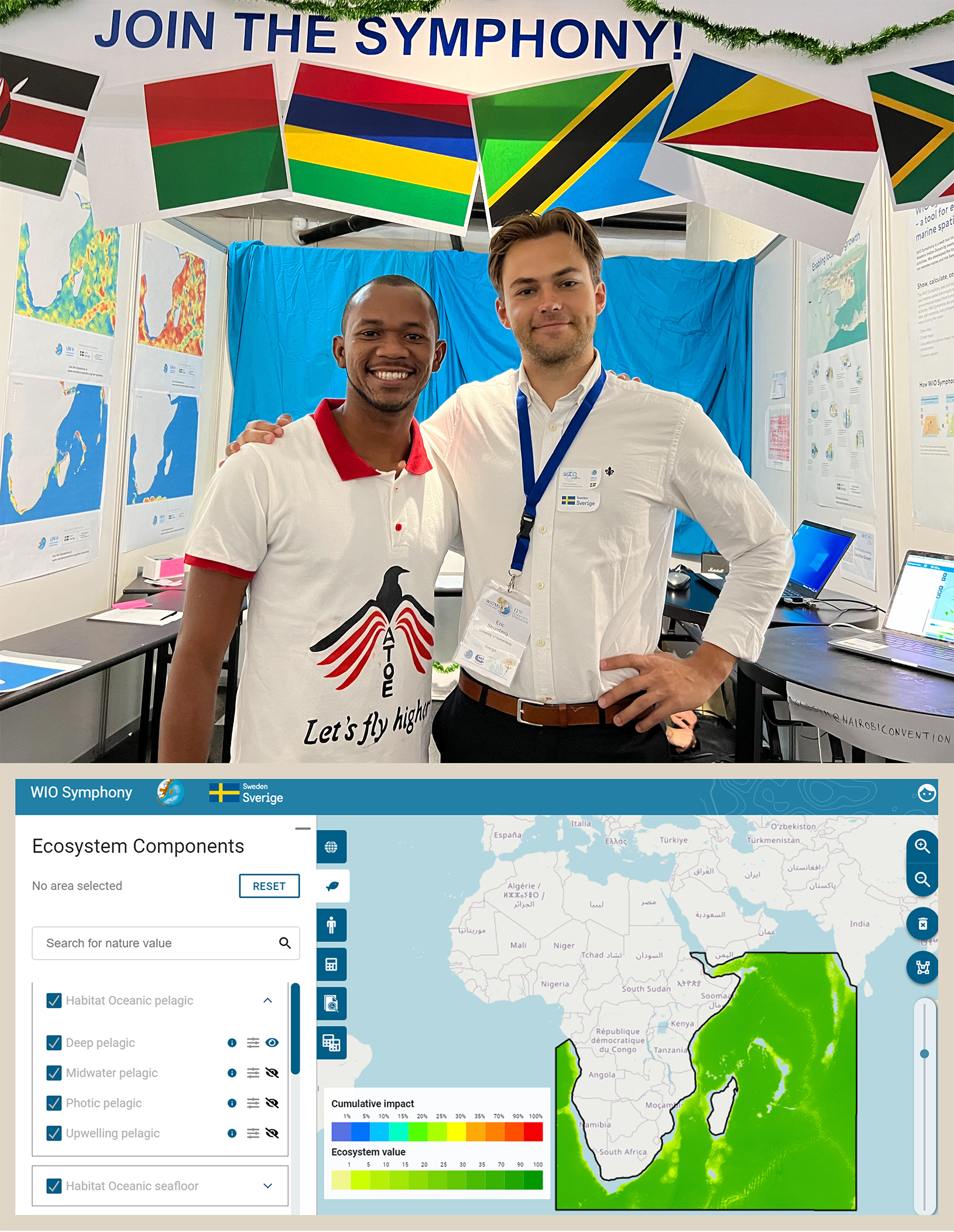Progress report for
Swedish Agency for Marine and Water Management and the Nairobi Convention co-creates tool for environmental decision-making in the Western Indian Ocean-region

Achievement at a glance
*** Achieved:The Nairobi Convention and the Swedish Agency for Marine and Water Management (SwAM) has co-created a tool for environmental decision-making for the Western Indian Ocean region.
Countries with 260 million inhabitants now have access to cumulative environmental impact assessment for the ocean, thanks to WIO Symphony.
*** Visualize data, test scenarios, compare ocean uses:
WIO Symphony is a web tool that supports marine spatial planning in the Western Indian Ocean by assessing environmental impact from human activities. WIO Symphony lets you visualize data, test scenarios, and compare different ways of using the ocean.
*** 9 percent of world ocean, code and data:
WIO Symphony covers 9 percent of the world ocean.
We develop the tool together – the Nairobi Convention, its ten member states, a team from Sweden, and contributors from around the world.
The code and data are available openly on GitHub via www.havochvatten.se/wio-symphony.
*** Tool features:
• View the data layers, such as maps of ecosystem components.
• Use the diagram in the calculation report to see what is impacting what.
• Draw your own areas, and edit pressures to test various scenarios of future use.
• The diagram shows you the top 5 impacts, in the calculation report.
• Cumulative impact is shown as heat maps.
• Compare two scenarios with the comparison report.
• Find best areas for an ocean use from a cumulative environmental impact perspective.
• Work on various geographical scales, view data and impacts.
WIO Symphony facilitates informed and transparent decision-making that can lead to sound and sustainable use of marine resources. This in turn can support wealth and socio-economic development in the Western Indian Ocean region.
*** Quotes from working group:
“This is a very good strategic tool in terms of marine spatial planning, because we now can see how the various environment components interact with pressure factors, mainly human activities – fishing, mining, shipping, tourism – and how this cumulatively interact with the environment components.” / Participant from Kenya
“As a convention, we value this partnership greatly. We see that it enhances some of our decisions of our contracting parties regarding development of partnerships, both within the region and from outside.
And I think this is a great example of a collaborative effort, with the North and the South of the globe so a great example of working together between global areas and regions.” / Representative from the Nairobi Convention secretariat
“I did enjoy working with the Swedish team. They are very kind; they are very humble. They want to see us own the tool. They have launched it, but they want to build the capacity so we can proceed to use our tool.” / Participant from Tanzania
Challenges faced in implementation
Impossible to meet in person during the first two years due to the pandemic Covid-19.Access to users and skills needed – that is, local marine spatial planners and modelers and full-stack developer.
Data availability and data resolution.
IT server availability at the UN.
Long-term operations and management due to only project funding and shortage in personnel with right skills.
Next Steps
Continue collaboration 2025 and 2026.1. Enhance data resolution
2. Facilitate local data integration
3. Improve tool accessibility
4. Secure operations via regular data updates, funding and servers
White paper for contracting parties.
National pilot project.
Potentially develop similar tools with other regional seas, such as a COBSEA Symphony.
Beneficiaries
260 million people Inhabitants, businesses and the environment in 10 countries 1. Comoros 2. France 3. Kenya 4. Madagascar 5. Mauritius 6. Mozambique 7. Seychelles 8. Somalia 9. United Republic of Tanzania 10. Republic of South Africa who are contracting parties to the Nairobi Convention, plus 11. Republic of Angola 12. Republic of Namibia in the Benguela Current Convention.
Actions
Involved marine spatial planning authoritiesPromoted to marine management and blue economy authorities and scientific communities
Mentioned in COP decision
Held trainings
Created support material
Transparent data
Open code
